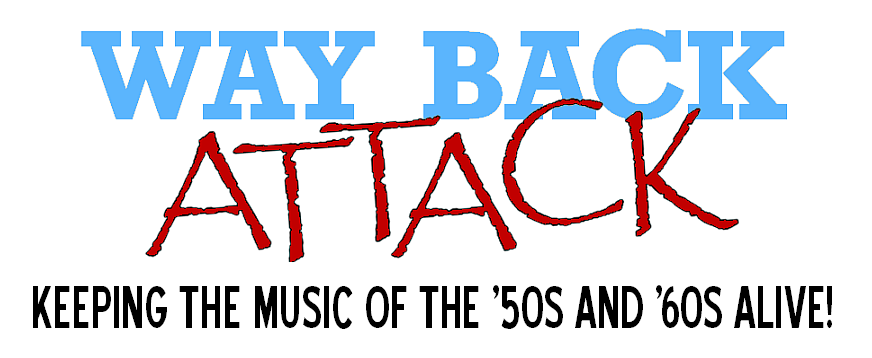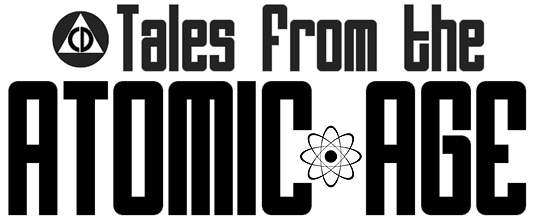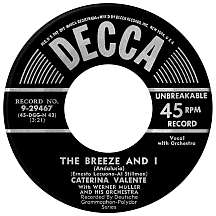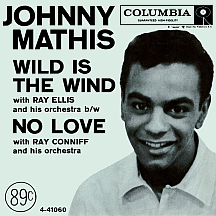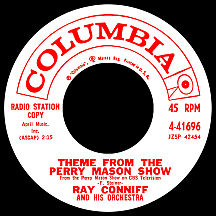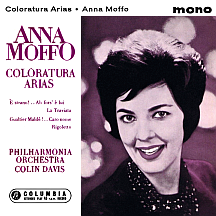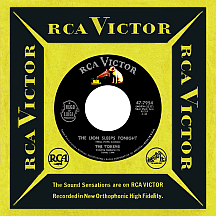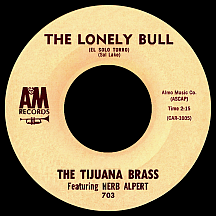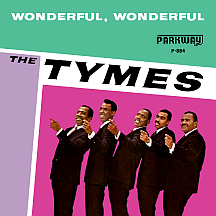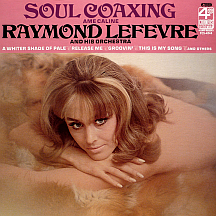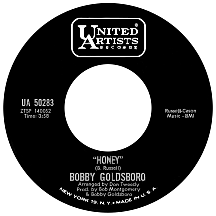Coloratura!:
Sopranos in the Sky
The human voice is the most difficult musical instrument to master. I'm not the first person who's said this, nor will I be the last. Coloratura singing is particularly tricky and not easily taught, a skill many young women have sought to excel in only to discover how challenging it really is. The art of wordless soprano singing (or high alto or even contralto) is not unheard-of among men, but it's primarily the domain of the female vocalist. Dating back 250 or more years, to what could be considered the latter baroque era, it began as a component of Italian opera. The coloratura soloist enhanced the presentation with a rapid-fire barrage of notes and scales, vibrating tones or trills sans lyrics. Depending on your perspective, musical passages like these have been known to get pretty wild at times.
A full-on coloratura performance can be mesmerizing, but it's more commonly intended as "coloring"...and there you have the root of the word. Its finest practitioners often discover in their youth that they have a knack for it, though some have found it's advisable not to start too early, as it can cause a strain on the vocal cords of the most disciplined singers. A great deal of practice goes into readying oneself for performing any kind of vocals designed for opera, at the very least a time-consuming endeavor for anyone with the basic tools, provided she possesses the ambition and discipline to make it happen.
One distinction coloratura singing has is that it is, by nature of its lack of lyrics, international. Though of Italian origin, it has no language per se, relying on imagery in listeners' minds to carry its message. Because of this universality it is adaptable to nearly every culture; its greatest stars of the last two centuries have come from far and wide. Giuditta Pasta, born in Italy in 1797, achieved her greatest success in Italy and France during the 1820s and has been cited as an inspiration to many of the best modern coloraturas. Jenny Lind hailed from Sweden, became a star soprano in her native land starting in the late 1830s while still in her teens, and later performed in the United States, as did Adelina Patti of Spain, who also began late in her teenage years and was a major star in the 1860s and '70s. Antoinette Sterling was, perhaps, the first American star soprano and coloratura specialist; born in 1850, she developed her talent just after the end of the Civil War, then moved to Great Britain where she achieved her greatest fame. Italian Luisa Tetrazzini was a star in her homeland in the early 1890s, barely in her twenties at the time; she later traveled the globe and performed in Russia, South America and the U.S.
The temptation of a movie career during the "talkie" era of the 1930s proved irresistible enough for some to take a detour to Hollywood. For Lily Pons it was a brief diversion. Born in France in 1898, her peak years occurred past age 30 after she arrived in America, ultimately performing at New York's Metropolitan Opera House more than 200 times over a three-decade span lasting until the early '60s. She had a brief film career, starring in three musicals for RKO: I Dream Too Much in 1935 (with leading man Henry Fonda), That Girl from Paris the following year and Hitting a New High in '37 (where she arguably hit a new low in her role as "Oogahunga the Bird-Girl"). Nevertheless, she remained a star in the TV era of the 1950s, appearing on a number of variety programs. North Carolina-born Kathryn Grayson's opera career never happened, at least not in the literal sense. Though trained as an opera singer when she was a teenager, she made her Hollywood film debut at 19, starring in many film musicals during the '40s and '50s where her operatic vocal talent was often featured (some of the best-known: Anchors Aweigh with Gene Kelly and Frank Sinatra in 1945, the all-star Ziegfeld Follies in '45, Show Boat in '51 and Kiss Me Kate in '53).
In the 1950s, coloratura vocalists were more open to the idea of working as background singers on popular recordings, surely considered a disastrous turn of events to a classical or opera purist. For every Yma Sumac (who famously claimed to be a Peruvian princess), an exotic singer unyielding in her pursuit of mainstream recognition, there were scores of uncredited sopranos who presumably preferred being in the background. In this implied downgrade of musical culture, the vocalists are, by design, largely unknown; the big name opera stars would never lower themselves to such a level. So those who did, in all likelihood budding opera singers who seldom if ever made the grade, remain nameless. Radio listeners, particularly those of a young age, might describe the voices as sounding like angels descending from the clouds, a sonic illusion often limited to overly-romantic love songs or instrumentals whose creators wished to incorporate the operatic soprano sound, sometimes achieving ethereal results. Many so-called instrumentals are actually showcases for coloratura singing and are, as such, loaded with vocals.
Some of the classically-trained coloratura vocalists who made names for themselves during the 1950s and '60s did so without even considering going the route of the unnamed session singer. Australian Joan Sutherland, born in 1926, is highly regarded in most parts of the world; she reached the peak of her powers during this era. Leontyne Price, an African-American singer born in Mississippi in 1927, achieved major stardom during the '50s and '60s; a frequent Metropolitan Opera performer, she was a sensation on Broadway and also toured Europe in productions of the all-black opera Four Saints in Three Acts and George Gershwin's Porgy and Bess. A favorite of NARAS, she had eleven Grammys on her mantle by the end of the '60s (far outdistancing her contemporaries) with more to come. Beverly Sills sang in a film short, Uncle Sol Solves It, in 1938 at the age of eight, then later broke into the business as a contestant on the radio show Arthur Godfrey's Talent Scouts in 1946, enjoying a lengthy opera career through the 1970s and becoming a well-known personality along the way with many TV appearances. New Yorker Reri Grist is another highly successful black opera singer, breaking through in the original Broadway production of West Side Story in 1957; her show-stopping rendition of "Somewhere" is the original to which all other versions are compared. Soon afterwards she focused on opera singing and excelled at it.
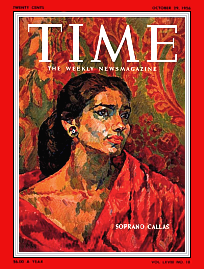
The greatest of all modern operatic sopranos, by general consensus, is Maria Callas (real last name Kalogeropoulos), born in New York City in 1923 of Greek ancestry. After moving to Athens during her teens and taking voice lessons, she returned to the U.S. and became a huge star in the 1950s, making her first of many appearances at the Metropolitan Opera in 1956 in the 18th-century Italian opera Norma, leading to high-profile fame over the next 15 years; curiously, she was nominated for six Grammy awards but never won. Her life was not without scandal, as a romantic relationship with married multimillionaire shipping tycoon Aristotle Onassis (occurring as early as 1960 and continuing into the '70s during his marriage to former First Lady Jacqueline Kennedy) fascinated the public as much as did her magnificent singing career. She died of a mysterious ailment in 1977 at age 53. Italian Renata Tebaldi, about the same age as Callas, became a star at the same time, sparking a rivalry between the divas; Renata also performed often at the Met starting in 1955, more than a year before Maria's debut. The situation became gossip-worthy with an October 1956 Time magazine article that claimed Callas had likened herself to Tebaldi in unflattering terms: "It would be like comparing champagne with cognac, or better with Coca-Cola!" Tebaldi triumphed over Callas when she won the 1958 award for Best Classical Performance, Vocal Soloist, in Grammy's first year, another cause for heated contention between the two.
It's not surprising that so little attention has been paid to the existence of coloratura singing in popular music. It was, perhaps, considered a sell-out, too blatantly commercial, not worthy of acknowledgment as serious music. The rules of coloratura singing are considerably looser in the production of pop songs; singers with limited range, or less stamina, with far less rigorous training than ambitious opera singers require, can sometimes be used satisfactorily. A singer who worked as such, then, might be better off going uncredited for fear of destroying any opportunity for advancement into the fine arts. But for top 40 fans there were thrills to be had listening to the detached angelic voices swirling behind many a pop or rock and roll singer or as part of a favorite instrumental; the sound has been embedded in the subconscious of the era's radio listeners whether or not they have given it much thought (even if, like myself, they occasionally witnessed legitimate coloratura performances on television variety series like The Ed Sullivan Show).
If there is one coloratura singer who most successfully combined the serious side of operatic stage performing with stardom of a less-serious pop culture kind, it would be Anna Moffo. Her family's Italian background seemed a world away from her birthplace, in 1932, in Wayne, Pennsylvania, but her goal was clear. In 1954 she won the Philadelphia Orchestra Young Artists audition, an annual competition that resulted in an opportunity to study in Rome. She made her stage debut the following year in Spoleto, Italy, performing in Gaetano Donizetti's comic opera Don Pasquale, following that with a starring role in the television production of Giacomo Puccini's extremely popular early-20th century opera Madame Butterfly. In 1959, when Anna made her Metropolitan Opera debut in Giuseppe Verdi's La Traviata, the world seemed hers for the taking. She made numerous appearances on TV (including Ed Sullivan's top-rated Sunday showcase) and was nominated nine times for a Grammy award (like Callas, she never won). Taking a leap few operatic singers dared, she became a film actress, with a small part in 1960's star-studded The Battle of Austerlitz and later roles in The Adventurers and several Italian films of the 1970s. But Moffo's active lifestyle took its toll; her vocal ability unraveled quickly during her early 40s and, though she continued for a few more years, retirement came early.
Pop music, meanwhile, had been infiltrated by coloratura singers toiling at a much less desirable level. Most were unknown, but a few managed to be credited, such as Loulie Jean Norman, playing the haunting "Swamp Girl" of Frankie Laine's 1950 hit. Later she was a member of The Ray Conniff Singers, stamping her signature sound on a version of the theme from Perry Mason that differs considerably from the CBS series' famous instrumental rendition; Loulie Jean also achieved a certain pop culture immortality with two of its most famous coloratura vocals, on The Tokens' chart-topping 1961 hit "The Lion Sleeps Tonight" and the theme of TV's influential late-'60s sci-fi series Star Trek. Caterina Valente, an international music and film star beginning in the mid-'50s, was not adverse to injecting a little coloratura into her performances, notably in her 1955 hit "The Breeze and I." Seattle's Norma Zimmer was the featured vocalist on George Cates' otherwise-instrumental 1956 hit "Moonglow and Theme from 'Picnic'," then spent more than two decades on the small screen as Lawrence Welk's "Champagne Lady."
Still, for the majority of popular recordings, coloratura session vocalists routinely went uncredited. Gogi Grant's 1955 hit "Suddenly There's a Valley" gets under way with glorious coloratura vocals. Roger Williams' instrumental version of the country classic "Tumbling Tumbleweeds" places the echoing sopranos in a desert setting. Johnny Mathis occasionally used coloratura singers, conspicuous on his 1958 Conniff-backed hit "No Love (But Your Love)" and even more prominent in 1962's "Marianna." Nashville group The Crescendos made the top ten in early '58 with "Oh Julie," featuring backing vocals by Janice Green, unpolished to the degree that her vocals can be considered anything but coloratura; Sammy Salvo, on the other hand, used just such an unidentified professional on his lesser-known cover version. Mitch Miller often used coloratura singers on his recordings; the '58 hit "Song for a Summer Night" is one example and, though uncredited, may feature Loulie Jean Norman of Conniff's Singers.
There are many other examples of otherworldly sopranos being used in pop music. Donnie Owens incorporated them (along with Duane Eddy's guitar playing) in his '58 hit "Need You." Yugoslavian Ivo Robic's German-language "Morgen," a hit in the fall of '59, features a male backing group, The Song-Masters, in addition to anonymous coloratura sopranos. Country music often featured pseudo-operatic female embellishment; a memorable example is Wynn Stewart's "Wishful Thinking" from early 1960. Later in the year, Johnny Tillotson scored his biggest hit, "Poetry in Motion," the song's over-the-top coloratura acrobatics one of its key ingredients. Other effective coloratura performances can be found in four 1962 recordings including David Carroll's instrumental theme from "Slaughter on Tenth Avenue," Elvis Presley's sweetly sentimental "She's Not You" and Brenda Lee's "All Alone Am I." Herb Alpert added coloratura singers and sound effects from a bullfight to heighten the mood of "The Lonely Bull," his first hit with The Tijuana Brass late in the year.
The Tymes went top ten in the fall of 1963 with their remake of Johnny Mathis's six-year-old debut "Wonderful, Wonderful," using coloratura singers where Johnny's original had not. Soulful duo Sam and Bill utilized gospelesque sopranos in "Fly Me to the Moon," a minor 1966 hit. One of the most effective uses came in Raymond Lefevre's 1968 hit "Ame Caline," probably better known by its alternate title, "Soul Coaxing." King Curtis used the sopranos to enhance his cover of the theme from "Valley of the Dolls" (a mega-smash that year for Dionne Warwick). "Honey," perhaps the biggest pop hit ever to use coloratura singers, did so to emotional effect on Bobby Goldsboro's long-running '68 chart-topper. I'll close with a 1968 country hit by Sonny James, "Heaven Says Hello," which ever-so-subtly suggests a small, delicate group of celestial voices somewhere up above. Sopranos in the sky!
